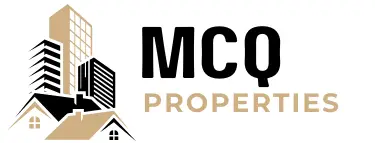Multifamily Real The Future ofEstate: Trends to Watch in 2024
Multifamily real estate remains one of the most dependable and profitable investment vehicles, consistently outperforming other asset classes in times of economic uncertainty. As we step into 2024, multifamily properties offer a unique combination of stable cash flow, long-term appreciation, and increasing demand. However, to succeed in this competitive market, investors must be aware of the evolving landscape. Several trends are shaping the future of multifamily real estate, and understanding them is key to making informed investment decisions. Here are the trends that will define the multifamily market in 2024 and how investors can leverage them for long-term success.
1. Economic Drivers and Market Growth in 2024
The health of the multifamily real estate market is intricately tied to broader economic forces. In 2024, economic conditions will continue to play a pivotal role in determining the success of multifamily investments. Despite uncertainties like rising inflation and fluctuating interest rates, the multifamily sector is expected to remain strong due to several factors that support its growth.
- Rising Interest Rates and Their Impact: As central banks work to curb inflation by raising interest rates, borrowing costs for homebuyers increase. This often leads to a decrease in homeownership rates, as fewer people can afford to buy homes. For multifamily property investors, this is an opportunity. When homeownership becomes less attainable, more individuals turn to renting, driving demand for rental units. Multifamily properties become more attractive because they provide a reliable stream of rental income, even in high-interest environments.
- Inflation as a Beneficial Factor: Inflation, while generally a concern for most markets, can actually work in favor of multifamily real estate investors. In times of inflation, rents tend to rise alongside other costs, allowing landlords to adjust rental rates upward and protect their investment’s purchasing power. Unlike other asset classes that may suffer from devaluation, multifamily properties can maintain or even increase their profitability during inflationary periods. This makes them an excellent hedge against inflationary pressures.
- Urban Migration and Population Growth: Another key driver of demand for multifamily housing is urban migration. As cities continue to expand, more people—particularly young professionals and retirees—are seeking affordable living options in urban areas. Multifamily developments provide an ideal solution by offering modern amenities and affordability compared to single-family homes. Urban population growth, especially in major metropolitan areas, is expected to drive continued demand for rental housing, making multifamily properties a crucial component of urban infrastructure.
2. Sustainability and Green Building Practices Are the Future
In 2024, sustainability is not just a trend; it has become a requirement for forward-thinking real estate investors. Multifamily properties that adopt green building practices are more appealing to environmentally-conscious tenants and more cost-effective for owners in the long run. Investors who prioritize sustainability will not only reduce operational costs but also increase the marketability of their properties to both renters and future buyers.
- Energy-Efficient Technologies in Multifamily Units: Today’s tenants are more informed about the environmental impact of their living spaces, and they expect property owners to meet higher standards of energy efficiency. Features such as LED lighting, energy-efficient windows, solar panels, and smart thermostats are no longer just nice-to-haves; they are becoming essential. These features help reduce the overall energy consumption of a building, resulting in lower utility bills for tenants and a smaller environmental footprint for property owners. For investors, making energy-efficient upgrades can lead to lower vacancy rates and higher rents, as tenants are willing to pay a premium for eco-friendly living spaces.
- Green Building Certifications: Properties that obtain certifications such as LEED (Leadership in Energy and Environmental Design) or WELL Building Standard demonstrate a commitment to sustainability, which can significantly boost their appeal. Buildings with these certifications not only command higher rents but also benefit from increased occupancy rates and lower turnover. Government incentives for green construction, such as tax breaks and grants, also make these certifications financially attractive for developers and investors. As more cities introduce regulations mandating energy-efficient buildings, being ahead of the curve will give multifamily property owners a competitive advantage.
- Water Conservation and Waste Reduction: Sustainability extends beyond energy efficiency to include water conservation and waste management. Implementing water-saving technologies like low-flow faucets, dual-flush toilets, and rainwater harvesting systems can drastically reduce water usage. Additionally, offering tenants recycling programs and composting facilities can further enhance the sustainability of a multifamily property. These initiatives not only appeal to eco-conscious tenants but also contribute to long-term savings on utility costs.
3. The Rise of Technology in Property Management
Technology continues to transform every aspect of real estate, and multifamily property management is no exception. In 2024, advancements in technology are making property management more efficient, cost-effective, and tenant-friendly. Investors who integrate modern technologies into their properties will see improved operational efficiency, higher tenant satisfaction, and ultimately, better financial performance.
- Smart Home Features and Tenant Expectations: Tenants today expect smart home technology as part of their living experience. Keyless entry systems, smart lighting, smart security systems, and even voice-controlled home automation are becoming standard in high-end multifamily properties. These features not only improve the tenant experience by providing convenience and security but also increase the value of the property. For property managers, smart home technology offers greater control over building operations, allowing for remote management of energy systems, security, and maintenance, reducing costs in the long term.
- Artificial Intelligence (AI) in Leasing and Maintenance: AI is increasingly being adopted in multifamily property management to streamline operations. AI-powered chatbots can handle tenant inquiries 24/7, helping with tasks like answering questions about leases, processing maintenance requests, and even showing virtual property tours. On the maintenance side, AI is being used to predict and address building issues before they become costly problems. Predictive maintenance technologies can alert property managers when HVAC systems, plumbing, or other critical infrastructure components are nearing the end of their lifecycle, allowing for timely repairs and minimizing downtime.
- Tenant Experience Platforms: Modern tenants expect seamless and convenient experiences when interacting with property managers. Platforms that allow tenants to pay rent, request maintenance, and communicate with management through mobile apps are becoming a standard offering. These platforms not only enhance tenant satisfaction by simplifying everyday tasks but also improve retention rates. Investors who implement these systems will find it easier to keep tenants happy, reducing turnover and increasing property profitability.
4. Remote Work and Live-Work Spaces Are the New Norm
The COVID-19 pandemic has permanently altered how and where people work, and remote work is now a fundamental part of modern life. In 2024, multifamily properties that cater to remote workers will continue to thrive, as more tenants look for spaces that accommodate both their personal and professional needs.
- Flexible Living and Working Spaces: The rise of remote work has created demand for flexible living spaces that offer more than just a place to sleep. Multifamily properties that provide built-in home offices, coworking spaces, or live-work units will be in high demand. These units cater to tenants who need a dedicated space to work while still enjoying the comfort and convenience of home. Property developers should consider designing floor plans with separate office areas or converting common spaces into shared work environments to attract remote workers.
- High-Speed Internet and Tech Amenities: One of the most critical factors for remote workers is access to reliable, high-speed internet. Multifamily properties that offer robust, fast Wi-Fi connectivity and other tech amenities, such as soundproof rooms and ergonomic workstations, will stand out from the competition. Investors should prioritize upgrading internet infrastructure to ensure that their properties meet the needs of tenants who rely on the internet for work and entertainment.
- On-Site Amenities for Remote Workers: Offering on-site amenities like business centers, conference rooms, and high-tech meeting spaces can further attract remote workers. Multifamily properties that provide these features create an ecosystem where tenants can live and work seamlessly. As the demand for flexible workspaces continues to grow, properties with these amenities will experience higher occupancy rates and tenant satisfaction.
5. The Affordable Housing Challenge
Affordability is one of the most pressing issues in real estate today, and it will continue to shape the multifamily market in 2024. Rising home prices and increasing mortgage rates have made homeownership unattainable for many, which in turn fuels demand for rental housing. However, this demand also underscores the need for more affordable multifamily housing options.
- Investing in Workforce Housing: Workforce housing—affordable rental units for middle-income workers—is becoming a critical focus for real estate investors. With many people unable to afford homeownership but still requiring quality housing near their workplaces, workforce housing provides an attractive investment opportunity. Multifamily properties that offer affordable units while maintaining modern amenities will see strong demand from tenants in this income bracket.
- Government Programs and Incentives: To encourage the development of affordable housing, governments are offering incentives such as tax credits, grants, and low-interest loans. Investors who take advantage of these programs can reduce development costs and increase their return on investment. Additionally, public-private partnerships aimed at solving the affordable housing crisis are on the rise, offering investors more opportunities to contribute to social good while earning profits.
- Rent Control and Regulation: While affordability is a major concern, it’s also important to be aware of the increasing regulation in the housing market. Many cities and states are implementing rent control measures to keep housing costs from spiraling out of reach. Investors should stay informed about local regulations and consider how these policies might impact their multifamily investments.
Conclusion: Navigating the Future of Multifamily Real Estate in 2024
The multifamily real estate market is poised for continued growth in 2024, but success will depend on adapting to the latest trends. Investors who stay ahead of economic shifts, embrace sustainability, integrate cutting-edge technology, and cater to the changing needs of tenants—especially remote workers—will find themselves well-positioned for success. Additionally, focusing on affordable housing options and workforce housing will not only address a critical market need but also create profitable investment opportunities.
As the market evolves, flexibility, foresight, and innovation will be the keys to thriving in multifamily real estate. By aligning your investment strategy with these trends, you can ensure that your multifamily properties remain competitive, profitable, and sustainable in 2024 and beyond.











